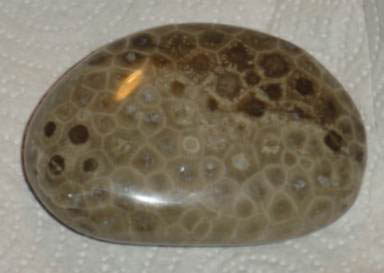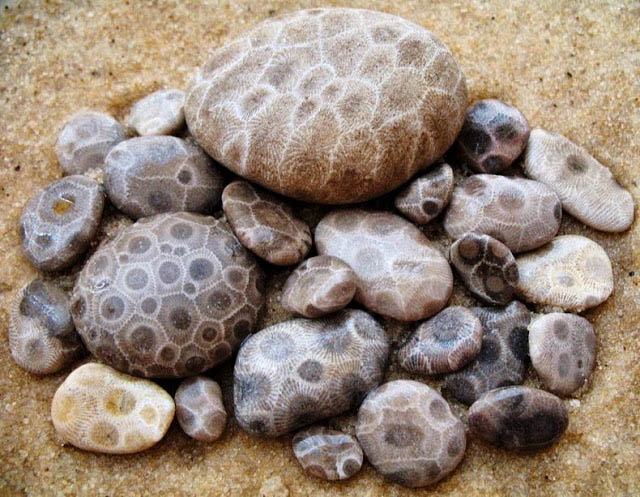A Petoskey stone is a rock and a fossil, mostly pebble-shaped, made up of a fossilized rugose coral, Hexagonaria percarinata, and lived in the warm waters of Michigan about 350 million years ago during the Devonian period. These stones were formed as a result of glaciation in which sheets of ice plucked stones from the bedrock, grinding their rough edges and depositing them in the northwest (and some in the northeast) portion of the lower peninsula of Michigan.

The name derives from Chief Pet-O-Sega, an Ottawa, Ontario, Canadian Indian Chief. Also named after him is the town of Petoskey, Michigan, USA and is the center of the area where the stones are located. The stones are found commonly on beaches and in sand dunes.
Petoskey stones can be found in Michigan on numerous beaches and inland areas, with many of the most common being those around Petoskey and Charlevoix. The frozen lake ice movement on the shore during the winters is thought to transform stones on the shore of Lake Michigan, revealing fresh Petoskey stones at the edge of the water every spring.
On 23 September 2015, a 93-pound Petoskey stone was confirmed to have been removed from the shallow waters of Lake Michigan, near the city of Northport, Michigan, USA. In December 2015, the Michigan Department of Natural Resources seized the stone under a state law that disallows the removal of more than 25 pounds (11 kg) of state land materials.
In October 2017 it was revealed that the stone would be on permanent display at the Outdoor Adventure Center, east of downtown Detroit near the Detroit River.
Petosky stones are sometimes used as gemstones.







